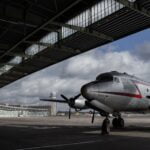Step into the world of sustainability with stainless steel – a material that not only boasts exceptional strength and durability but also takes center stage in the fight for a greener future. In this article, we explore the eco-friendly nature of stainless steel and how it has become the go-to choice for eco-warriors around the globe. From its recyclability to energy efficiency, stainless steel is a champion in the quest for a more sustainable planet. Join me as we unveil the remarkable qualities of this metal powerhouse and unlock its potential to shape a better tomorrow.

Eco-Friendly Nature of Stainless Steel
Stainless steel, the unsung hero of the eco-conscious world, holds the key to a greener future. This durable and recyclable material boasts an impressive array of eco-friendly attributes that make it the top choice for those who prioritize sustainability. Let’s delve into the eco-friendly nature of stainless steel and uncover why it’s a true champion in the fight against environmental degradation.
Recyclability: The Ongoing Cycle of Sustainability
Stainless steel’s recycling prowess is unmatched. It is 100% recyclable, meaning it can be melted down and reshaped into new products indefinitely without losing any of its unique properties. In fact, over half of all stainless steel materials in use today are sourced from scrap materials, further conserving valuable resources. By choosing stainless steel, we can actively contribute to reducing our reliance on raw materials and minimizing waste.
“Choose stainless steel, and you join the remarkable cycle of sustainability, where old stainless steel is reborn into new, without compromising its eco-friendly qualities.”
Durability: A Long-lasting Legacy
One of the most remarkable attributes of stainless steel is its incredible durability. Unlike other materials that wear out or rust over time, stainless steel stands the test of time. It’s resistant to corrosion, stains, and high temperatures, ensuring that products made from stainless steel have a longer lifespan. This longevity not only minimizes frequent replacements but also diminishes the environmental impact associated with manufacturing and disposal processes.
“Invest in stainless steel, and you invest in a future where durability triumphs, reducing waste and preserving our planet one product at a time.”
Low Environmental Impact: Saving Energy, Reducing Toxicity
The stainless steel industry is committed to minimizing its environmental footprint. During production, it eschews toxic run-off, providing a safer alternative compared to other metals and precious metals. Moreover, the manufacturing process of stainless steel utilizes primary energy sparingly, conserving non-renewable sources and limiting waste generation.
“Stainless steel’s low environmental impact shines brighter when you realize it saves energy, limits waste, and helps protect our planet from harm.”
The Green Legacy: Breaking Down with Grace
Even when its useful life comes to an end, stainless steel remains an eco-warrior. Over time, it breaks down into natural elements that are safe for the environment, leaving behind no traces of toxicity. This means that stainless steel, in its final stages, contributes to the natural harmonious cycle of our planet.
“Choose stainless steel, and you choose a journey where even at its end, it embraces nature and leaves no harmful trace behind—a true green legacy.”
In conclusion, stainless steel’s eco-friendly nature shines through its recyclability, durability, low environmental impact, and graceful breakdown. By opting for this sustainable material, we can make a significant difference in our collective fight against environmental challenges. Let’s embrace stainless steel, a true ally in our quest for a greener future.
Stainless steel is a material with countless benefits and qualities that make it a popular choice for a variety of applications. From its corrosion resistance to its durability and sleek appearance, there are many good things about stainless steel. If you’re curious to learn more about the advantages of this remarkable metal, click here to explore the comprehensive list of good things about stainless steel. Dive into the world of stainless steel and discover why it is praised by engineers, designers, and homeowners alike. Don’t miss out on uncovering the numerous reasons why stainless steel is such a standout material for various industries and purposes. Click now to access this informative resource and expand your knowledge about the countless benefits of stainless steel.
Check out the resource here to learn more about the good things about stainless steel.
FAQ
Question 1: Why is stainless steel considered an eco-friendly material?
Answer: Stainless steel is considered eco-friendly because it is 100% recyclable, with over half of all stainless steel materials in use today sourced from scrap materials. Its production does not produce toxic run-off, and the stainless steel industry uses primary energy sparingly, saving non-renewable sources and limiting waste. Furthermore, stainless steel is less toxic to the environment compared to other metals and precious metals, and over time, it breaks down into natural elements that are safe for the environment.
Question 2: How is stainless steel recycled?
Answer: Stainless steel is recycled through a process that involves collection, sorting, shredding, melting, and purification. Scrap stainless steel is collected from various sources, including manufacturing waste, discarded consumer goods, and industrial equipment. The collected scrap is then sorted based on its composition and processed to remove contaminants. Next, it is shredded into smaller pieces and melted in electric arc furnaces or induction furnaces. The molten stainless steel is purified and cast into new products or stored for future use.
Question 3: Is stainless steel more durable than other materials?
Answer: Yes, stainless steel is known for its exceptional durability. It is highly resistant to corrosion, staining, and scratching, making it suitable for a wide range of applications. Unlike other materials, stainless steel does not require protective coatings or treatments to maintain its durability. It can withstand harsh environmental conditions, including extreme temperatures, moisture, and UV exposure. This durability ensures that stainless steel products have a longer lifespan, resulting in less waste and a reduced environmental impact.
Question 4: How does stainless steel contribute to energy efficiency?
Answer: Stainless steel contributes to energy efficiency in multiple ways. Firstly, its production process requires less energy compared to other materials. The stainless steel industry uses primary energy sparingly, minimizing the consumption of non-renewable energy sources. Additionally, stainless steel has excellent thermal conductivity, allowing it to efficiently transfer heat. This property makes stainless steel ideal for applications such as cookware and heating systems, where it helps save energy by facilitating rapid and even heat distribution.
Question 5: Can stainless steel be recycled indefinitely?
Answer: Yes, stainless steel is a material that can be recycled indefinitely without degradation in quality. Unlike other materials, each recycling cycle does not weaken or impair stainless steel’s inherent properties. This recyclability ensures that stainless steel products can be repurposed or transformed into new products without any loss in performance. By encouraging the recycling of stainless steel, we can minimize the need for virgin materials, conserve resources, and reduce the environmental impact associated with its production.
- Crypto Quotes’ Red Flags: Avoid Costly Mistakes - June 30, 2025
- Unlock Inspirational Crypto Quotes: Future Predictions - June 30, 2025
- Famous Bitcoin Quotes: A Deep Dive into Crypto’s History - June 30, 2025
















